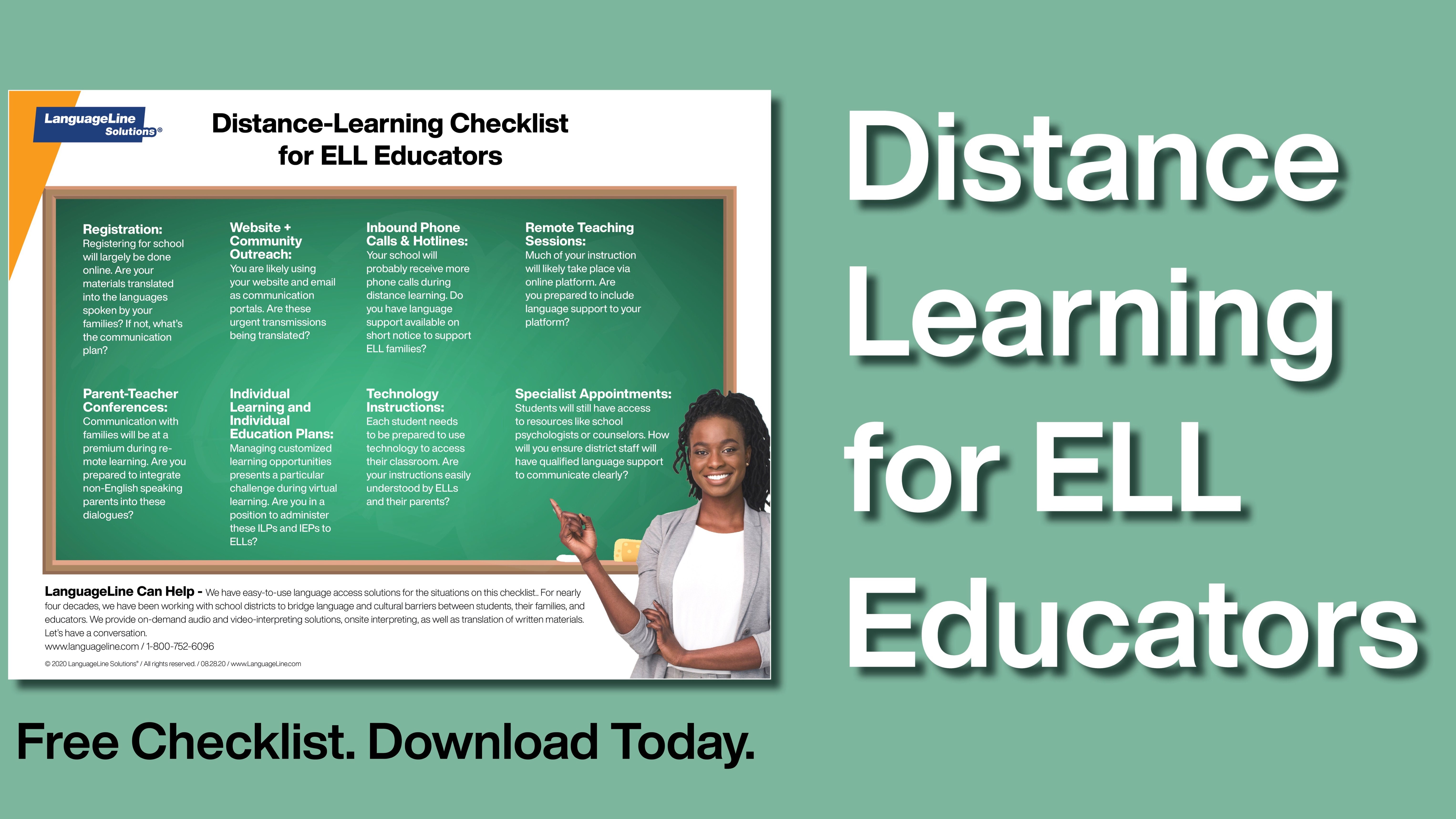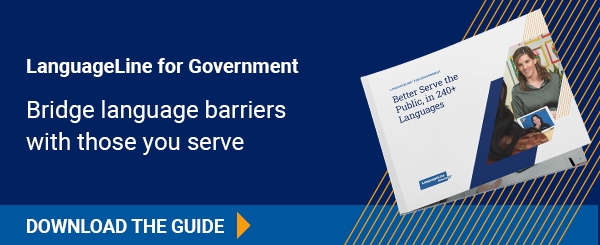
Distance learning impacts all students, but particularly the 10 percent of students in the United States who are considered English language learners (ELLs). There is at least one English language learner in the majority of American high schools.
These students and their families may require special assistance during distance learning. From letters home to parent-teacher conferences to individual learning plans (ILPs), educators must make a conscious effort to communicate in more than one language in order to achieve mutual understanding.
Our checklist is meant to stimulate thinking and guide schools through the process of empowering ELLs and their families during distance learning.
DOWNLOAD: Distance Learning Checklist for Educators of ELLs
What Defines an ELL?
An ELL is a term used in some English-speaking countries such as the U.S. and Canada to describe a person who is learning the English language in addition to their native language or any other languages they may speak.
ELLS may not have the English language ability needed to achieve their full academic potential in schools and learning environments in which instruction is delivered entirely in English. In most cases, students are identified as an ELL after they complete a formal assessment of their English literacy, during which they are tested in reading, writing, speaking, and listening comprehension. If the assessment results indicate that the students will struggle in regular academic courses, they may be enrolled in either dual-language courses or English as a second language (ESL) program.
Moreover, the families of these students will likely require language assistance for communication. This may be interpretation in the form of video or phone, or the translation of written materials.
Are There a Lot of ELLs?
According to New York University, ELLs are the fastest-growing student population group, according to the National Education Association. By 2025, an estimated 25 percent of public school students will be ELLs.
The Distance Learning Challenge
Typically, ELLs have one-to-one contact with English Language Learners. ELLs and their teachers have a routine. During distance learning, explanations that were implicit now must become explicit.
DOWNLOAD: Distance Learning Checklist for Educators of ELLs
CASE STUDY: Language Access Allows Diverse School to Manage ELL Needs
Their families will also need unique assistance to understand what will be expected during distance learning so that they can be collaborators in educating their children.
Our checklist covers:
- Registration
- Websites and community outreach
- Inbound phone calls and hotlines
- Remote teaching sessions
- Parent-Teacher conferences
- Individual Learning Plans (ILPs) and Individual Education Plans (IEPs)
- Technology instructions
- Specialist appointments
We invite you to download our checklist today.
LanguageLine® Can Help
For more than four decades, LanguageLine has assisted schools around the United States and Canada in empowering ELLs and their families. We take great satisfaction in partnering in creating a learning experience that can change a life.
LanguageLine will connect you to our team of more than 20,000 professional, on-demand interpreters via audio or video in 30 seconds or less. We do this in more than 240 languages. LanguageLine can also translate and localize your written content. We provide these services 24 hours a day, seven days a week, 365 days a year.
It all starts with a conversation. Please contact us via our website or by calling 800-752-6096.

